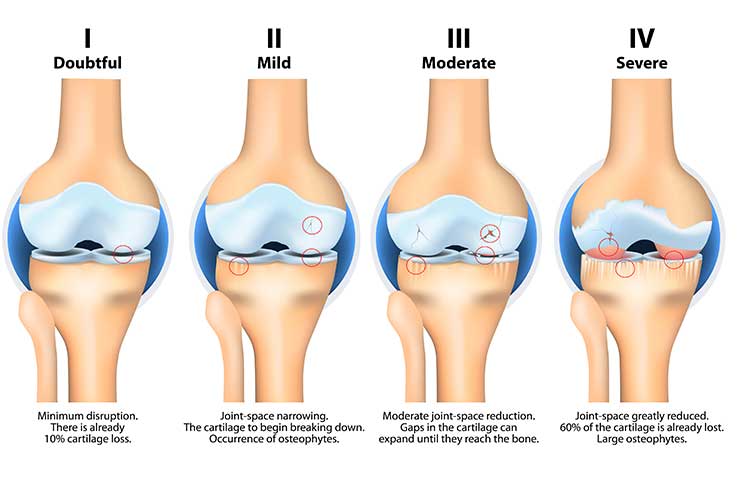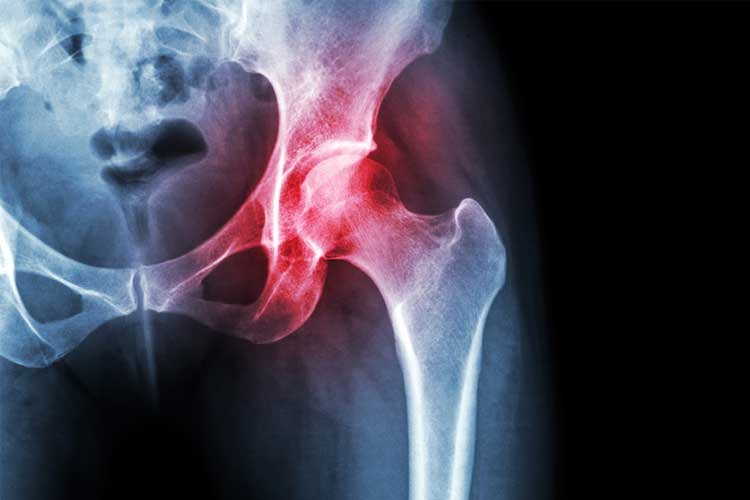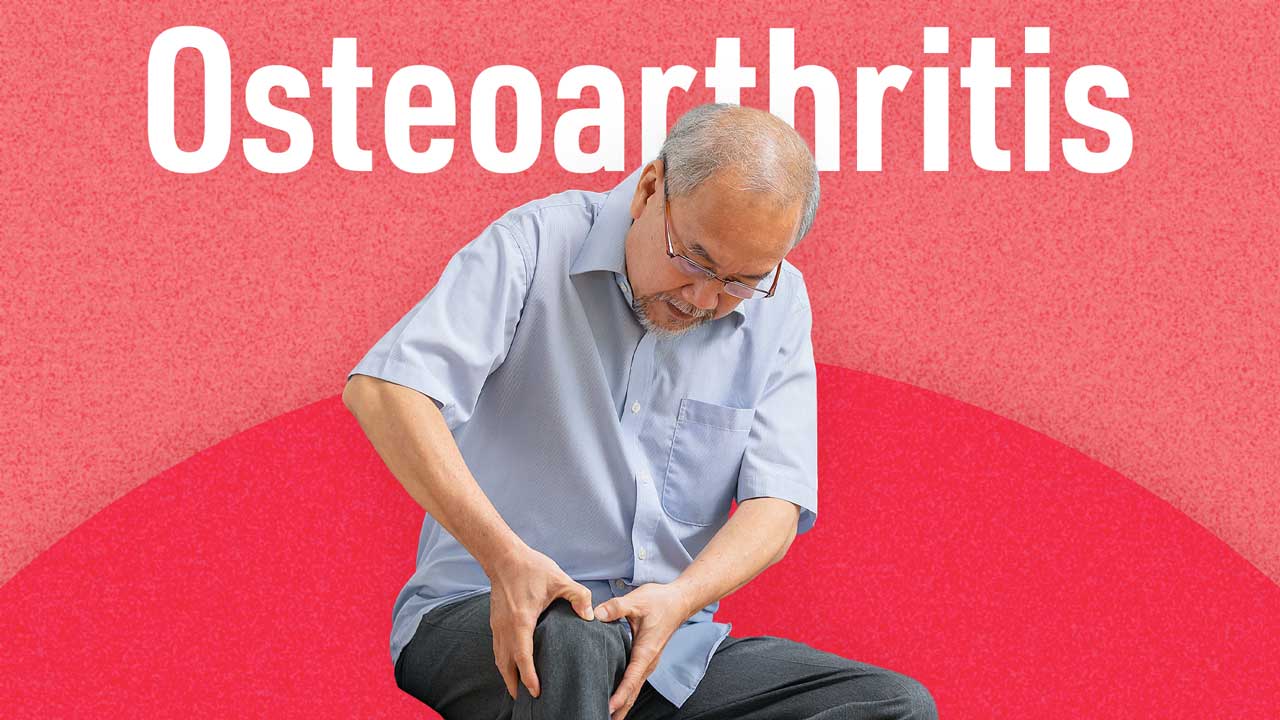There are over 100 types of arthritis. Each type affects the joints in different ways, and the degree of pain experienced will vary between patients (Arthritis Australia 2024a).
The most common form of arthritis, osteoarthritis, is a chronic condition affecting the whole joint, including the bone, cartilage, ligaments and muscles (AIHW 2024; Arthritis Australia 2024b).
Osteoarthritis accounts for about 57% of all arthritic conditions in Australia (AIHW 2024).
What is Osteoarthritis?
Osteoarthritis is a condition that causes pain, swelling and/or reduced motion. Like other forms of arthritis, it tends to worsen over time (AIHW 2024).
As the condition progresses, everyday tasks that were once simple can become challenging. Initially, a person will experience pain during and after physical activity, but as the condition progresses, pain will be present during minor movements or even while resting (Arthritis Australia 2024b).
Osteoarthritis may include:
- Inflammation to the tissues around the joints
- Cartilage tears/damage
- Bony spurs growing around the edge of the joint
- Ligament deterioration.
(Arthritis Australia 2024b)
Osteoarthritis can affect any joint. However, it occurs most often in:
- Knees
- Hips
- Finger joints
- ‘Big’ toes.
(Arthritis Australia 2024b)

Prevalence of Osteoarthritis in Australia
It’s reported that roughly 2.1 million Australians (8.3%) are living with osteoarthritis (AIHW 2024).
Three in five people who have osteoarthritis are female (WHO 2023), and although osteoarthritis can affect people of all ages, the chance of developing osteoarthritis increases considerably after the age of 45 (AIHW 2024).
Socioeconomic factors also influence the chance of a person developing arthritis, including osteoarthritis. People living in lower socioeconomic areas have a prevalence rate of 18% for arthritis compared to 12% for people in less disadvantaged areas (AIHW 2024).
Symptoms of Osteoarthritis
The following is a list of common osteoarthritis symptoms (bear in mind that symptoms will differ depending on the joint affected):
- Stiffness and pain in joints
- Crepitus: clicking noises, grating sensations and crunching sensations
- Loss of flexibility and reduced range of movement
- Muscle weakness
- Joint instability.
(MHA 2024; Arthritis Australia 2024b; Better Health Channel 2019)
Risk Factors for Osteoarthritis
Those who are at increased risk of osteoarthritis include:
- People who have a previous injury to a joint
- People who are overweight or obese
- Older people
- People who work in roles requiring repetitive tasks that put strain on joints
- People with a genetic disposition to osteoarthritis
- Females are more likely to develop osteoarthritis than men.
(Better Health Channel 2019; Arthritis Queensland 2023)
Diagnosing Osteoarthritis
A doctor will diagnose osteoarthritis based on a patient’s symptoms, medical history and a physical examination. An X-ray might show narrowing and changes in the shape of the joint; however, it may not be enough to demonstrate how much pain a patient is in. Blood tests will only rule out other types of arthritis (Arthritis Australia 2024b).

Managing Osteoarthritis
There is no cure for osteoarthritis, but if managed effectively, patients can still enjoy a high quality of life. A patient should create a treatment plan with a general practitioner (GP).
Management options for osteoarthritis include:
- An exercise program tailored to the person’s condition and ability
- A weight management plan
- Manipulation and stretching of affected areas as well as the application of local heat or cold
- Medicine-centric pain management, including the use of medicines such as paracetamol or non-steroidal anti-inflammatory drugs (NSAIDs)
- Mindfulness and meditation for pain management
- Devices such as braces, walking sticks and shoe insoles
- Joint replacement surgery, in the event of the failure of other therapies.
(Arthritis Australia 2024b; Healthy WA 2014)
Exercise is a crucial part of any osteoarthritis management plan. Regular exercise has the potential to improve joint mobility and strength and reduce some of the symptoms caused by the condition (MHA 2024).
Preventing Osteoarthritis
- Maintain a healthy weight:
- Excess weight presents a risk for osteoarthritis as a person’s weight-bearing joints are put under additional pressure
- Control glucose levels:
- Research suggests that diabetes, which affects the body's ability to regulate blood glucose, could be a significant risk factor for osteoarthritis
- Diabetes can trigger inflammation, which leads to cartilage loss
- Exercise:
- Moderate exercise is a key way to keep joints healthy
- As little as 30 minutes of exercise per day aids joint and muscle function
- Rest:
- In the case of ligament tears and strains, dislocation and fractures, it is important to rest and recover properly
- It’s estimated that 50% of people who experience a traumatic joint-related injury develop osteoarthritis
- Practice a healthy lifestyle:
- This includes diet (including drinking and smoking habits), sleep, stress management and socialisation.
(Arthritis Foundation n.d.)

Conclusion
Encourage patients to acknowledge and express their feelings. They are likely to experience a mix of emotions, including fear, anger and frustration. This is normal. It may be worth encouraging patients to seek counselling to talk about and process their emotions (Arthritis Australia 2024a).
Empower your patients with information and resources to understand their particular type of arthritis. This will provide them with a sense of control and will give them a better idea of their treatment options.
Test Your Knowledge
Question 1 of 3
True or false: People in higher socioeconomic areas have a higher chance of developing osteoarthritis.
Topics
Further your knowledge
References
- Arthritis Australia 2024b, Osteoarthritis, Arthritis Australia, viewed 7 October 2024, https://arthritisaustralia.com.au/types-of-arthritis/osteoarthritis/
- Arthritis Australia 2024a, Understanding Arthritis, Arthritis Australia, viewed 7 October 2024, https://arthritisaustralia.com.au/what-is-arthritis/understanding-arthritis/
- Arthritis Foundation n.d., Slowing Osteoarthritis Progression, Arthritis Foundation, viewed 7 October 2024, https://www.arthritis.org/diseases/more-about/slowing-osteoarthritis-progression
- Arthritis Queensland 2023, Osteoarthritis, Arthritis Queensland, viewed 7 October 2024, https://www.arthritis.org.au/arthritis/types-of-arthritis/osteoarthritis/
- Australian Institute of Health and Welfare 2024, Chronic Musculoskeletal Conditions, Australian Government, viewed 7 October 2024, https://www.aihw.gov.au/reports/chronic-musculoskeletal-conditions/musculoskeletal-conditions/contents/about
- Better Health Channel 2019, Osteoarthritis, Victoria State Government, viewed 7 October 2024, https://www.betterhealth.vic.gov.au/health/conditionsandtreatments/osteoarthritis
- Healthy WA 2014, Osteoarthritis, Government of Western Australia, viewed 7 October 2024, https://www.healthywa.wa.gov.au/Articles/N_R/Osteoarthritis
- Musculoskeletal Health Australia 2024, Understanding Osteoarthritis, MHA, viewed 7 October 2024, https://muscha.org/osteoarthritis/
- World Health Organisation 2023, Osteoarthritis, WHO, viewed 7 October 2024, https://www.who.int/news-room/fact-sheets/detail/osteoarthritis
 New
New 

